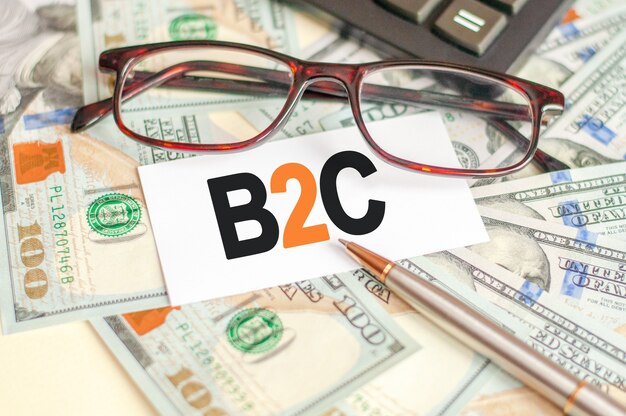Navigating the World of Preferred Dividends: A Complete Guide
Preferred dividends can seem like a complex world to navigate, yet they present an intriguing opportunity for investors seeking steady income. But how does one actually find these dividends? In this guide, we'll unravel the intricacies of preferred dividends, explore related subtopics, and equip you with the necessary knowledge to make informed investment decisions.
📘 Understanding the Basics of Preferred Dividends
What Are Preferred Dividends?
Preferred dividends are payments made to preferred shareholders of a company. Preferred shares are a type of equity that typically gives investors a higher claim on assets and earnings than common shares. This means that preferred shareholders receive dividend payments before common shareholders, and these dividends are usually fixed.
Key Characteristics
- Fixed Dividend Rate: One of the defining features of preferred shares is their fixed dividend rate, which can provide a steady income stream for investors.
- Priority Over Common Shares: In the event of a bankruptcy, preferred shareholders have a higher claim on assets than common shareholders.
- Hybrid Security: Preferred shares combine elements of both stocks and bonds, offering potential appreciation like stocks, and fixed-income features like bonds.
Why Invest in Preferred Dividends?
Preferred dividends can provide consistent income and potentially less volatility compared to common stocks. They are an attractive option for risk-averse investors seeking dividend income.
🧭 How to Find Preferred Dividends
Researching Companies
Finding companies that issue preferred shares is a critical first step in investing in preferred dividends. Here’s how to start your search:
- Look for Large, Stable Companies: Many large-cap companies, particularly in sectors like utilities, banking, and telecommunications, issue preferred shares.
- Use Financial Databases: Platforms such as financial news websites, stock market databases, and investment platforms often have sections dedicated to preferred stocks.
- Check Company Financials: Companies often outline their preferred shares in their financial statements, accessible via their investor relations page.
Evaluating Dividend Payments
Once you have identified potential companies, it's time to evaluate their dividend payments:
- Dividend Yield: Calculate the dividend yield, which is the annual dividend payment divided by the price per share. This helps assess potential returns.
- Payment History: Examine the company's history of dividend payments to gauge reliability.
- Financial Health: A company’s financial stability can impact its ability to maintain dividend payments, so reviewing financial health is crucial.
Tools and Resources
Utilizing the right tools can significantly enhance your ability to find and evaluate preferred dividends:
- Stock Screeners: Use these to filter stocks based on dividend yield, sector, or market capitalization.
- Financial News: Keeping updated with industry news and analyses can illuminate valuable investment opportunities.
- Professional Analysis: Consider subscribing to investment research services for detailed analyses and recommendations.
📊 Analyzing the Risks and Rewards
Potential Risks
- Interest Rate Sensitivity: Preferred shares are sensitive to interest rate changes. When rates rise, preferred share prices often fall, and vice versa.
- Credit Risk: Evaluate the issuing company’s creditworthiness. A lower credit rating might mean higher yields but also increased risk.
- Liquidity Risk: Not all preferred shares are frequently traded, making it harder to buy or sell without affecting the price.
Potential Rewards
- Stable Income: With their fixed dividend payments, preferred dividends provide a predictable income stream.
- Potential for Capital Appreciation: While preferred shares are less volatile, they can still appreciate in value, offering capital gains to investors.
- Tax Advantages: In some jurisdictions, preferred dividends may be taxed at a lower rate than interest income.
✅ Practical Tips for Investing in Preferred Dividends
Here's a handy list of tips to keep in mind as you explore preferred dividends:
- 📉 Assess Your Risk Tolerance: Ensure that preferred shares align with your overall risk tolerance and investment objectives.
- 📈 Diversify Your Portfolio: Reduce exposure to any single sector or issuer by diversifying your holdings.
- 🔍 Stay Informed: Regularly review your investments and keep up with industry developments and interest rate trends.
- 📑 Understand Tax Implications: Be aware of the tax impact of preferred dividends on your overall investment returns.
- 🏦 Consider Professional Advice: If uncertain, consider consulting a financial advisor to tailor an investment strategy to your needs.
Diving Deeper: Related Subtopics
Preferred Shares vs. Common Shares
Understanding the differences between preferred shares and common shares can guide your investment strategy:
- Voting Rights: Common shareholders have voting rights, whereas preferred shareholders typically don’t.
- Profit Participation: Common shares offer the potential for higher long-term returns through the rise in stock prices and participation in company profits beyond fixed dividends.
Tax Considerations
Taxation can have a significant impact on your overall returns from preferred dividends:
- Qualified Dividends: Some preferred dividends are considered qualified and taxed at the capital gains tax rate.
- Interest Income: In certain circumstances, preferred dividends may be taxed as ordinary income depending on the type of preferred shares.
Reinvesting Dividends
Reinvesting dividends can compound your returns over time:
- Automatic Reinvestment Plans: Many investment brokers offer automatic reinvestment options for dividends, allowing you to purchase additional shares.
- Growth Strategy: Reinvesting dividends can be part of a growth-oriented strategy, increasing your shareholding over time.
🌟 Key Takeaways and Conclusion
Navigating the landscape of preferred dividends requires a sound understanding of their characteristics, benefits, and potential drawbacks. By leveraging research tools, keeping informed about market trends, and diversifying investments, you can strategically incorporate preferred dividends into your portfolio and enjoy a steady stream of income.
In conclusion, whether you're a seasoned investor or new to the world of dividends, understanding how to find and evaluate preferred dividends is a valuable skill. Keep these insights in mind as you explore investment opportunities, and remember that successful investing often involves a careful blend of strategy, research, and patience. Happy investing!
